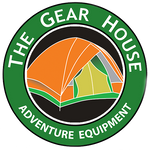Built to the exacting EN1891 standard for static ropes, KM-III is the industry standard for rescue and rappelling operations. The kernmantle construction consists of a durable polyester cover over bundles of unidirectional nylon core yarns. The polyester cover absorbs less water, has lower stretch, and is more abrasion resistant than the nylon covers found on some static ropes. The polyester cover and nylon core are balanced during manufacturing to attain the ultimate in performance.
KMIII static rope is a balanced construction consisting of a continuous filament polyester cover braided over a unidirectional nylon core. KMIII is designed to meet the rigorous requirements associated with rescue and rappelling operations. KMIII is dual certified (CE & NFPA).
Features:
7/16" - UL Classified to NFPA 1983:2006 for Light Use
Applications:
-
Vertical Lifeline
-
Rappelling
-
Caving
-
Canyoneering
-
Work Positioning
-
High Lines
-
Fall Protection
-
Climbing
-
SRT
-
Aborist
-
Climbing Gym (top roping)
-
Ropes Courses
|
Size |
Weight |
Tensile |
Static |
Classification |
||
|---|---|---|---|---|---|---|
|
lbs/100' |
g/m |
lbs |
kg |
|||
|
7/16" |
5.8 |
86.3 |
8,000 |
3,632 |
2.9 @ 1.35 kN (300 lbf) |
Light Use |
Sunlight/UV:
Very little degradation from sunlight. Can be used outside over long term if inspected regularly.
Chemicals:
Nylon will degrade with strong oxidizing agents, mineral acids, and 90% formic acid. May discolor when exposed to high levels of carbon dioxide. Polyester has good resistance to most chemicals, except 95% sulfuric acid and strong alkalines at boil.
Heat:
Nylon melts at 460°F with progressive strength loss above 300°F. Polyester melts at 480°F with progressive strength loss above 300°F.
Dielectrics:
Good resistance to the passage of electrical current. However, dirt, surface contaminants, water entrapment, and the like can significantly affect dielectric properties. Extreme caution should be exercised any time a rope is in the proximity of live circuits.
Sheaves:
Recommended sheave diameter to rope diameter is 8:1.
Working Loads:
No blanket safe working load (SWL) recommendations can be made for any line because SWL's must be calculated based on application, conditions of use, and potential danger to personnel among other considerations. It is recommended that the end user establish working loads and safety factors based on best practices established by the end user's industry; by professional judgment and personal experience; and after thorough assessment of all risks. The SWL is a guideline for the use of a rope in good condition for non-critical applications and should be reduced where life, limb, or valuable property is involved, or in cases of exceptional service such as shock loading, sustained loading, severe vibration, etc. The Cordage Institute specifies that the SWL of a rope shall be determined by dividing the Minimum Tensile Strength of the rope by a safety factor. The safety factor ranges from 5 to 12 for non-critical uses and is typically set at 15 for life lines.
Splicing Instructions:
Not Spliceable

